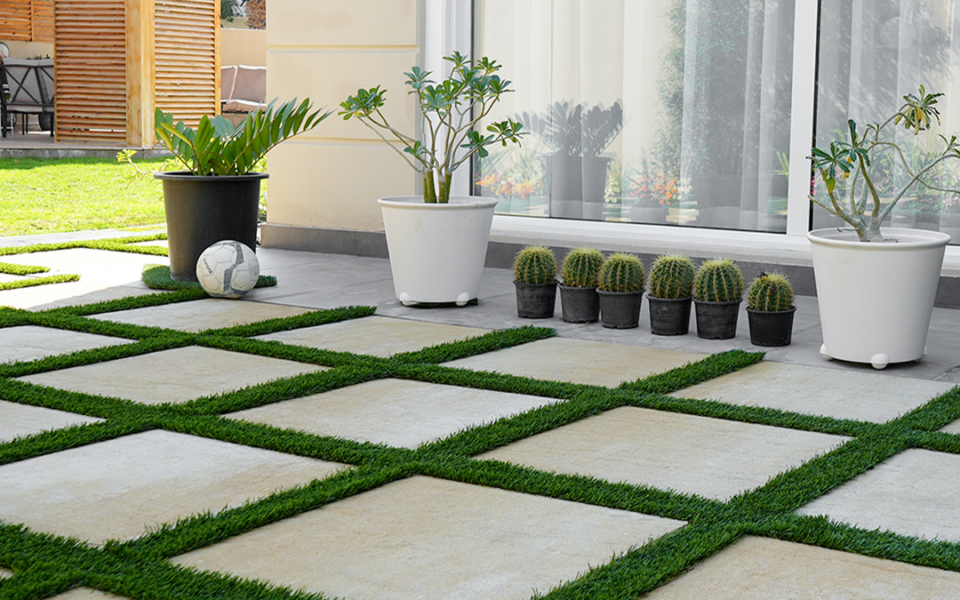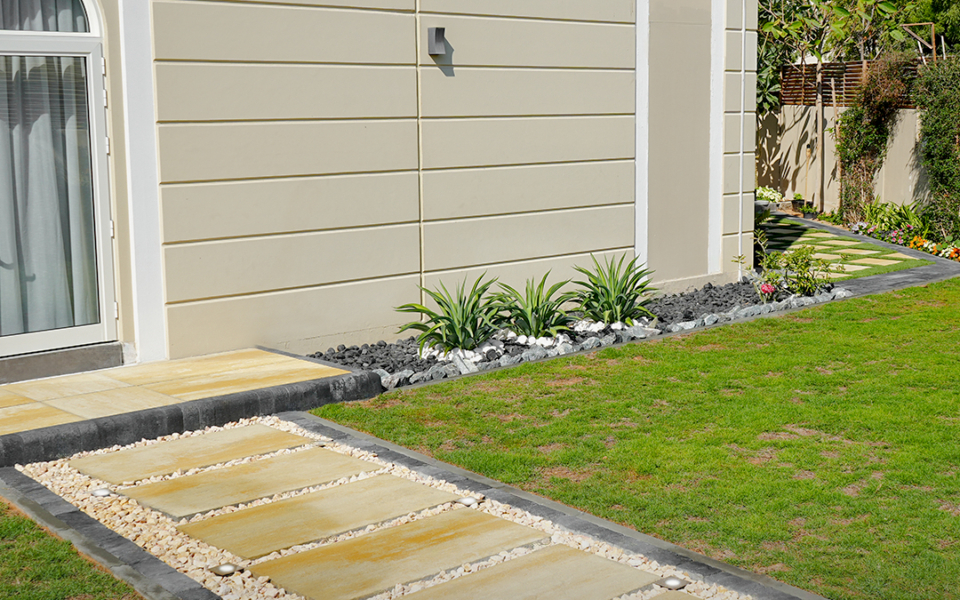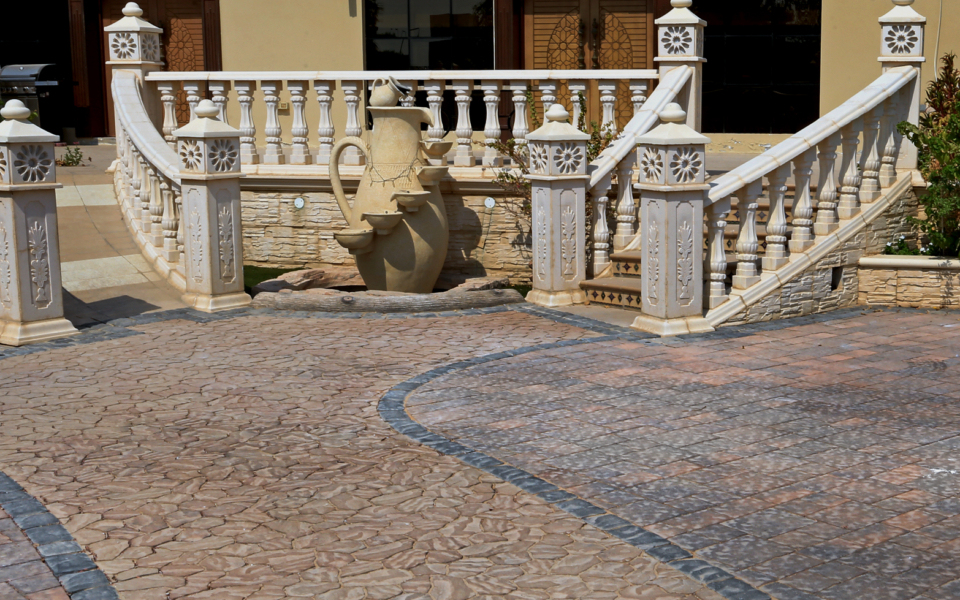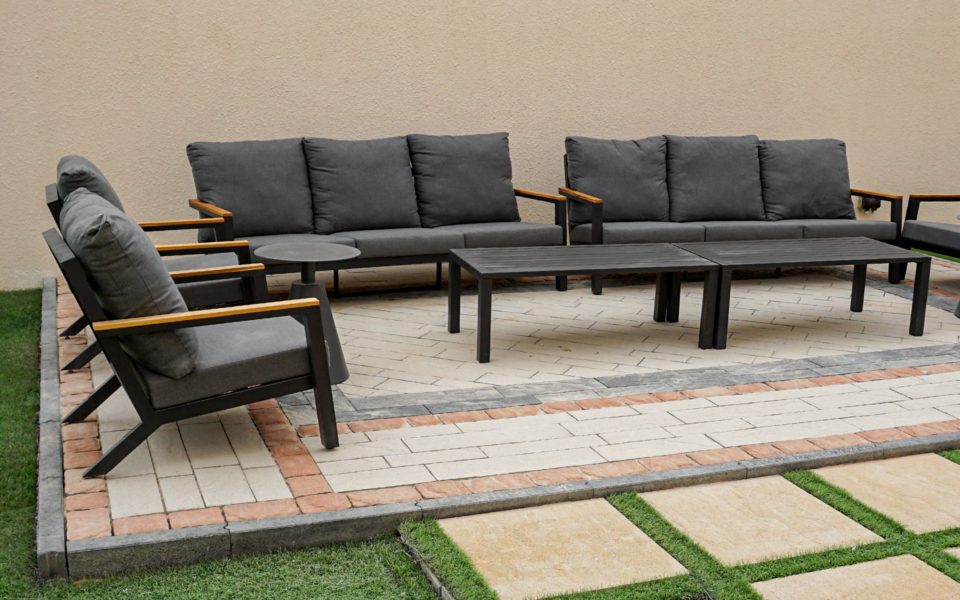BY DUCON OUTDOOR LIVING | PUBLISHED : OCT 6 2023
Paver designs and technology have advanced greatly in recent years as a result of a confluence of aesthetic choices, environmental concerns, and improvements in building materials and methods.
Pavers can be used to form mosaics or elaborate geometric designs for aesthetically attractive outdoor environments. These patterns give sidewalks, patios, and courtyards a distinctive and creative touch. Green infrastructure components, such as vegetated cells or systems that encourage the growth of grass or ground cover between paver joints, are included in some paver designs. These pavements enhance the quality of the air and water while also promoting sustainable urban environments. Edge restraints and integrated lighting systems are frequently added to paver projects to improve safety and aesthetics. These features outline the paved area’s perimeter and offer lighting at night.
Modern trends in Paver Designs
Minimalist and Contemporary Designs:
Contemporary and minimalist designs are frequently favored in modern paver architecture types. To go with such designs, pavers with simple shapes, neutral hues, and geometric patterns are in high demand. Modern and minimalist paver designs emphasize simplicity, straight lines, and a contemporary feel. To achieve a streamlined and uncluttered appearance, these designs frequently employ a limited color palette and material selection.
Simplicity is frequently favored in minimalist designs, both in terms of aesthetics and upkeep. To maintain the area’s appearance while exerting the least amount of effort, choose low-maintenance pavers and landscaping solutions.
Geometric Patterns and Mosaics:
For exterior spaces like patios, pathways, and driveways as well as inside spaces like kitchens and bathrooms, geometric paver patterns and mosaics are popular design options. In order to create aesthetically pleasing and frequently complex layouts, these patterns and mosaics are made by placing pavers or tiles in geometric forms and patterns.
When making mosaic patterns, tiny, frequently colorful, and atypically shaped pieces of stone, glass, or ceramic tiles are used to create elaborate motifs. These patterns can be anything from straightforward geometric shapes to intricate artistic creations.

Consider elements like the size and color of the pavers or tiles, the layout of the room, and the overall aesthetic you want to create when creating with geometric paver patterns and mosaics. Adding depth and intrigue to your design can also be accomplished by combining several patterns or materials. Geometric paver designs and mosaics give a variety of possibilities for improving your outdoor or indoor areas, depending on your preference for a conventional, modern, or creative aesthetic.
Mosaic patterns:
Small, frequently colorful, and atypically shaped pieces of stone, glass, or ceramic tiles are used to create elaborate motifs in mosaic patterns. These patterns can be anything from straightforward geometric shapes to intricate artistic creations.

Diamond Pattern:
Creating a diamond-shaped pattern out of rectangular pavers or tiles, either individually or repeatedly, is known as a diamond pattern. This results in a dynamic and visually appealing arrangement.
Modern pavers are designed for low maintenance, with features like stain resistance, durability, and ease of cleaning to ensure they look good for years with minimal effort. Options and trends for pavers are anticipated to increase as technology and design continue to advance. Your particular project goals, whether you value aesthetics, sustainability, usefulness, or a combination of these will determine the best paver design and technology to use.
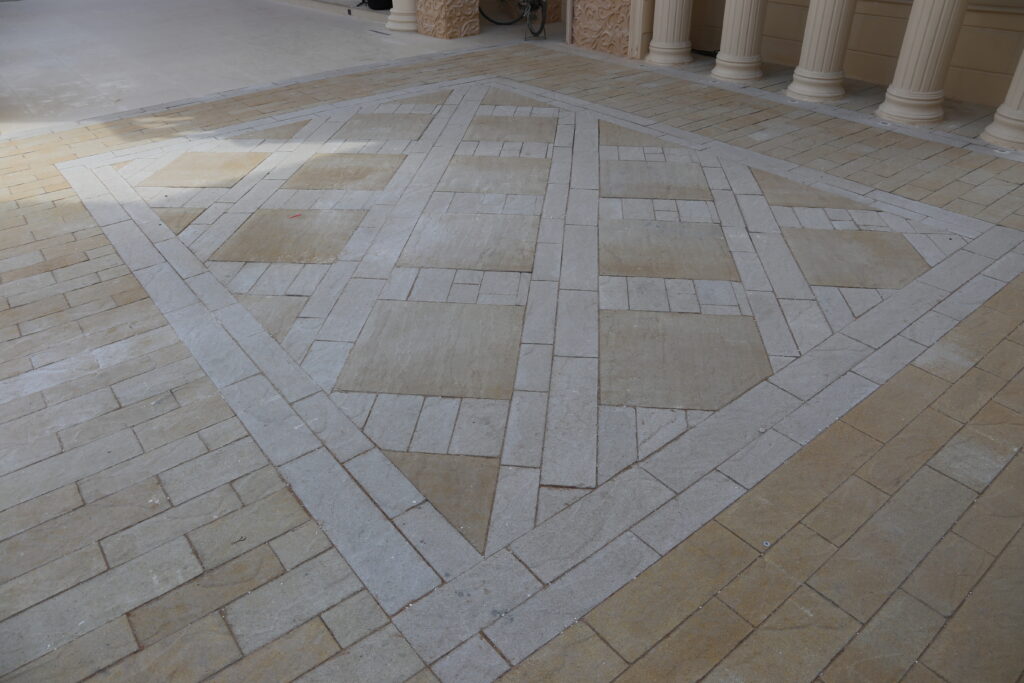
The sphere of paver design and technology continues to evolve at pace, unveiling new possibilities in creating sustainable, aesthetically pleasing, and robust hardscape features. Modern trends in paver design and technology are a testament to this dynamic transformation, incorporating fresh material compositions, eco-friendly solutions, and cutting-edge digital technology to reinvent the way we perceive and utilize paving. It’s a thrilling narrative, filled with practical innovation and brilliant creativity.
To help you navigate this thrilling landscape of modern trends in paver design and technology, here are some actionable steps:
- Stay abreast of industry developments through trusted online resources. This thorough industry guide on Paver Technology Developments is a handy bookmark!
- Connect with industry leaders and innovators through networking platforms.
- Implement sustainability and digitalization initiatives in your practices.
Conclusion
As we navigate this exciting path of change and innovation, it’s clear that the future of paver design and technology is filled with ample opportunities for creativity, operational efficiency, and sustainability. These modern trends have begun to redefine the industry, developing a vibrant, progressive landscape that is only set to grow. As we conclude, it’s inspiring to recognize the road ahead for modern trends in paver design and technology is not just paved with exciting developments, but also an optimistic vision for a sustainable, technology-driven future.
Please let us know your thoughts on these trends and how they’re impacting your industry practices. Share your comments below, and don’t forget to check our other insightful posts on www.duconodl.com/blog
